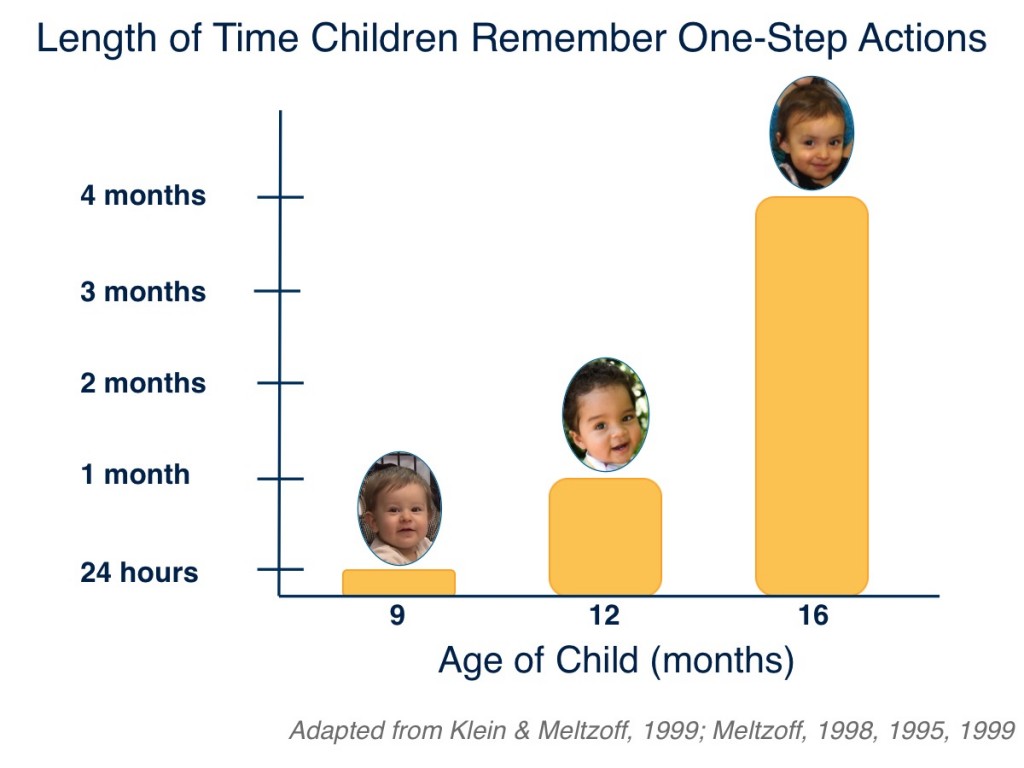
Studying imitation is a useful way to measure the memory of babies before they are old enough to talk. Once children can talk, they can just tell us what they remember! Imitation is called deferred imitation when there is a delay between the time a model demonstrates a behavior and when the child has an opportunity to imitate the action. This delay can range from minutes to months. During the delay, children do not have the opportunity to play with the objects that the model used to demonstrate the new behaviors.
Children’s ability to imitate actions increases with age. The graph shows that as children get older, they can remember a simple one-step action for much longer periods of time. For example, one research study found that 9-month-olds show deferred imitation of a simple action, such as pushing a button to make a sound, after 24 hours. They can watch a model perform an action on an object one day, store it in their memory, then recall and perform the same action 24 hours later. Another study found that 12-month-olds imitate a simple one-step action after a 4-week delay. Amazingly, 16-month-olds can remember a similar, simple action for 4 months!
Children’s ability to remember actions decreases when the actions are more complex. If 18-month-olds view a 3-step action, like putting a ball in a jar, placing a stick on the jar, and shaking it to make a rattle, they are likely to remember but for a shorter amount of time. Eighteen-month-olds remember this 3-step sequence for about 2 weeks.
Deferred imitation supports the teaching and learning of non-verbal behaviors and traditions. This occurs when children and adults remember and reproduce behaviors at different time points or in a new place from where the behavior was first modeled. For example, when you see children rocking a baby doll in their arms saying “shhh,” it’s likely deferred imitation in action.
-
- Control group
- a group in a study who does not receive the treatment. The group serves as a comparison for the experimental group.
- Deferred imitation
- reproducing a behavior after a delay from its initial demonstration
- Electroencephalography (EEG)
- a method used to measure electrical activity in the brain
- Generalization
- the ability to apply something learned in one situation to a new situation
- Imitation
- observing then reproducing, or copying, a behavior
- Mirror neurons
- a type of brain cell. Mirror neurons respond when an animal produces an action and when they observe another animal produce the same action.
- Theory of mind
- the awareness that other people can have different thoughts and feelings from one’s own
- Trial-and-error learning
- trying different actions until you perform the right one